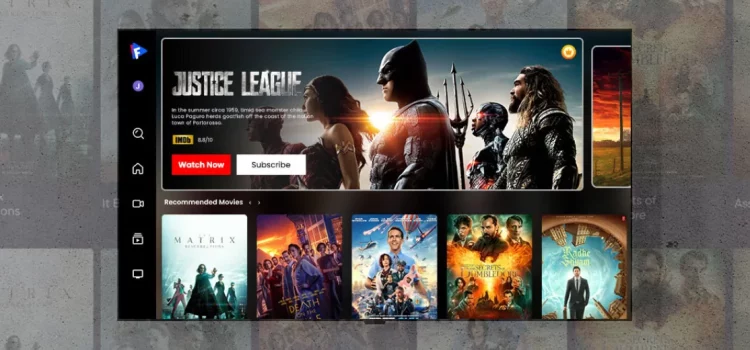
Introduction
Streaming services have completely changed how we watch TV and movies. Over the last 20 years, platforms like Netflix, Hulu, and Amazon Prime Video have changed the entertainment world. Today, people use streaming services to watch everything from movies and TV shows to live events and music. In this article, we will look at how streaming services have developed, how they’ve affected traditional media, and how they are still changing the way we enjoy entertainment.
The Early Days of Streaming Services

Before streaming, people used cable TV, DVDs, and VHS tapes to watch their favorite shows and movies. Streaming media online wasn’t really a thing yet. The first streaming service to get attention was Netflix. Netflix started as a DVD rental service in 1998 but became famous in 2007 when it launched streaming. This was the start of the change in how we watched TV and movies.
At first, Netflix mainly offered movies and TV shows for a low monthly price. People could watch what they wanted, when they wanted. This was much easier than renting DVDs, and soon it became very popular.
The Growth of Streaming Platforms
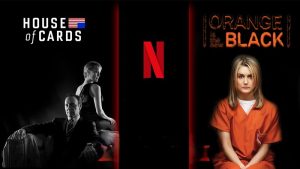
By the early 2010s, streaming services started to grow. Hulu and Amazon Prime Video joined the market, becoming strong competitors to Netflix. These platforms also offered movies and TV shows, but they had some extra features. Hulu let users watch live TV, while Amazon gave users benefits like free shipping on products.
Netflix led the way with original TV shows, like House of Cards and Orange is the New Black. These shows helped Netflix become a bigger name and set the trend for other platforms to make their own original content. In 2020, streaming services became a big part of everyday life, and many new platforms were launched, such as Disney+, Apple TV+, and HBO Max.
Streaming and Social Interaction
Streaming services have also created new ways for people to connect. Many viewers discuss their favorite shows and movies online or with friends and family. Features like watch parties let people stream content together, even if they’re far apart. This social aspect makes streaming more interactive and enjoyable, allowing viewers to share their experiences.
The Impact on Traditional Media
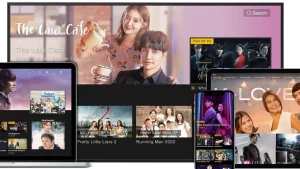
The rise of streaming services has changed the way people use traditional media, especially cable and satellite TV. More people started canceling their cable TV plans, choosing streaming instead. This shift, known as “cord-cutting,” made cable companies nervous.
Cable TV providers, once the main way to watch TV, had to adjust. Some of them launched their own streaming platforms, like HBO Max, while others teamed up with existing streaming services to offer more choices to customers.
Streaming also affected movie theaters. People could watch new movies at home on streaming platforms, which made it less common to go to the theater. The COVID-19 pandemic made this even more common, as many movie theaters closed and movie studios started releasing films directly to streaming platforms.
How Streaming Services Changed TV Watching
Before streaming, people had to watch TV shows at specific times. If you missed an episode, you had to wait for a rerun or buy the DVD. Streaming has completely changed this. With streaming, you can watch any episode or movie at any time. Services like Netflix also let you binge-watch entire seasons, giving you control over your viewing schedule. This on-demand access has made watching TV more flexible and enjoyable for many people.
Offline Viewing Options
One helpful feature of many streaming services is offline viewing. This allows users to download movies and shows to watch later without needing an internet connection. It’s especially useful for people who travel often or live in areas with poor internet. Platforms like Netflix and Amazon Prime offer this option, making it easier to enjoy content anytime and anywhere. Offline viewing adds more flexibility to streaming.
Subscription-Based Models
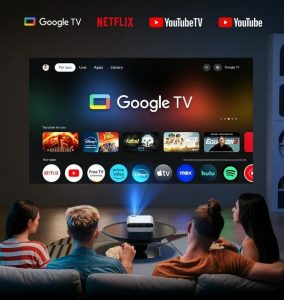
Streaming services work on a subscription model. This means you pay a monthly fee for access to a large amount of content. This model has been successful for both the services and the people who use them. For example, Netflix, Hulu, and Amazon Prime Video all offer large libraries of content for a relatively low price. This has made streaming a popular option for many people who want to avoid paying for expensive cable TV.
For streaming companies, subscriptions bring in steady income, which helps them keep creating new content. The subscription model also gives users the freedom to cancel at any time, making it flexible.
The Impact on Movie Theaters
Streaming services have also had an impact on movie theaters. In the past, going to the movies was the main way to watch new films. However, with streaming, many movies are now released directly to platforms instead of theaters. This has changed the movie industry, with some studios choosing to skip the theater release and go straight to streaming. While theaters still remain popular, streaming has given viewers more options for watching films at home.
The Role of Family and Shared Accounts
Streaming services are also popular because they allow family members to share accounts. Many platforms let you create multiple profiles under one subscription, so everyone can have their own recommendations and watch their favorite shows. This makes streaming affordable for families. It’s also common for friends or roommates to share accounts, allowing them to split the cost. This shared experience is one of the reasons why streaming services have become so widespread.
The Impact on Content Creation

Streaming services have also changed how content is made. Traditional TV shows were often on a set schedule and had limited choices for viewers. With streaming, people can watch anything at any time. This shift has led to a rise in new and creative shows, as platforms like Netflix and Amazon Prime Video spend billions of dollars creating original content.
This new way of making shows has also allowed for more diversity in the stories we see on screen. Underrepresented voices are getting more chances to share their stories, and this has brought fresh perspectives to television and film.
Streaming has also changed the movie industry. Many movies that would have gone straight to DVD or TV now appear on streaming platforms, which lets them reach a global audience. Some movies are even released directly to streaming, skipping theaters entirely.
How Streaming Saves Time
Streaming services save time compared to traditional TV. With no need to wait for commercials or scheduled broadcasts, viewers can jump right into their favorite shows or movies. The ability to pause, rewind, or fast-forward also helps users control their watching experience. This convenience has made streaming services a favorite for busy people who don’t want to waste time.
Competition Between Streaming Services
As more streaming services emerge, competition has increased. Companies are constantly trying to outdo each other by offering exclusive shows, films, and features. For example, Disney+ has exclusive rights to popular franchises like Marvel and Star Wars, while Netflix focuses on creating a variety of original series. This competition is good for consumers because it offers more choices, but it also means companies have to work harder to keep their subscribers happy.
The Global Reach of Streaming

Streaming services have a global audience, breaking down barriers between countries. Platforms like Netflix and Disney+ are available in dozens of countries, offering subtitles and dubbing in multiple languages. This makes it easy for people around the world to enjoy content from different cultures. Shows like Squid Game and Money Heist have become global hits, showing how streaming can connect audiences everywhere.
Challenges and the Future of Streaming
While streaming services have grown quickly, they also face challenges. One challenge is the growing number of services. With more platforms available, people are beginning to feel overwhelmed by all the choices. This is known as “subscription fatigue,” and it can make it harder for platforms to keep growing.
Another challenge is the cost of creating original content. As the competition for subscribers increases, streaming companies have to spend more money on making high-quality shows and movies. This puts pressure on companies to balance costs and keep customers happy.
Additionally, getting the rights to popular content is becoming more difficult. Streaming services often have to compete for the rights to movies and TV shows, which drives up prices and makes content harder to secure.
Despite these challenges, streaming services are here to stay. The future of streaming looks bright as these platforms continue to grow and adapt. We may even see new technology, like virtual reality or interactive TV shows, play a bigger role in the future.
The Future of Streaming Services
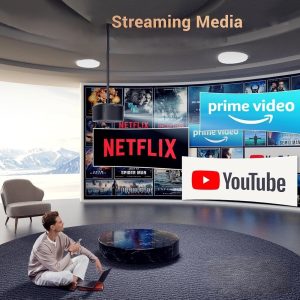
The future of streaming looks bright, despite the challenges. We may see new technologies, like virtual reality or interactive TV shows, becoming more common. Platforms will continue to compete for subscribers by offering better content and more flexibility. As streaming grows, we might even see more changes in how we watch movies and shows, making the entertainment experience even more personalized and immersive.
Comparative Table: Streaming Services vs Traditional Media
| Factor | Streaming Services | Traditional Media (Cable/Satellite TV) |
|---|---|---|
| Cost | Usually lower, with a monthly subscription | Higher, often with additional fees |
| Content Availability | Watch on demand, anytime, anywhere | Limited by TV schedules and channels |
| Access | Available on devices like smart TVs, phones, and tablets | Usually requires a TV and a set-top box |
| Flexibility | Watch whenever you want; cancel anytime | Fixed schedules; no flexibility |
| Original Content | Lots of original programming (e.g., Netflix Originals) | Fewer original shows; often reruns |
| Ad Experience | Many options for ad-free viewing | Ads are constant and can’t be skipped |
Conclusion
Streaming services have changed the way we watch TV and movies. They offer convenience, flexibility, and affordability, and they have led to a rise in original programming. While traditional media like cable TV has faced challenges due to streaming, many companies are adjusting to the new reality. As more platforms launch and compete for subscribers, streaming services will continue to shape the future of entertainment. With more choices and innovations on the horizon, the streaming revolution is far from over.








